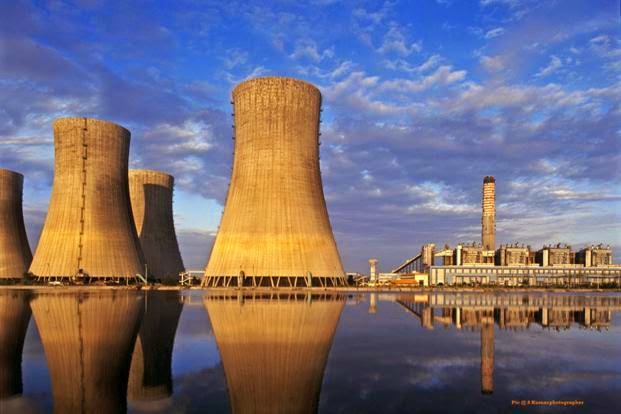Projects leveraging funds allocated to panchayati raj, rural development ministries
 |
The government has substantially
raised an earlier solar energy target
of achieving 20,000 megawatts (MW)
capacity by 2022 to 100,000MW. |
New Delhi: The government is planning a massive programme to dot India’s countryside with renewable energy projects, using funds allocated to the rural development and panchayati raj ministries, as it aims to reduce the nation’s overwhelming reliance on imported fossil fuels.
The ministry of new and renewable energy is working on the plan to leverage the reach and budget of the two rural-related ministries to create these green projects for panchayats and self-help groups, according to a top government official, who requested anonymity.
The government is also exploring the idea of setting up employment-linked renewable energy projects in rural areas, said the official. “Given the reach of these ministries and the canvas they cover, it makes sense to partner with them. Panchayats have a demand for energy and have the money given in the budgets that are earmarked for them. Our plan is to dovetail with the ongoing schemes,” said a top government official requesting anonymity.
Some of the major rural development programmes of the government include the Mahatma Gandhi National Rural Employment Guarantee Scheme and the Pradhan Mantri Gram Sadak Yojana, which aims to connect villages with good all-weather roads. While the ministry of rural development has an annual budget of Rs.80,043 crore, the panchayati raj ministry has an allocation of Rs.7,000 crore.
The rural employment programme alone has a budget of around Rs.40,000 crore and guarantees at least 100 days of unskilled work in a year to every rural household. Another senior government official confirmed the government’s strategy. “We can give broad directions to the states to develop such projects in the rural areas,” the official said. The government’s renewed focus on green energy comes against the backdrop of the US and China reaching a climate change accord.
Under the agreement, the US will cut greenhouse gas emissions to 26-28% below 2005 levels by 2025, and China will peak its carbon emissions by 2030 and will aim to get 20% of its energy from zero-carbon emission sources by the same year. The accord between the world’s two biggest economies would help push other nations to negotiate a global pact at the United Nations climate conference in Paris this year, the two countries said.
Mint reported on 19 November that India plans to train around 50,000 people in areas related to solar power to tap energy from the sun. In addition, the government is also working on a strategy to turn some 20,000 unemployed graduates into entrepreneurs to help it meet its ambitious solar power generation targets—a plan it will implement in concert with state administrations. Prime Minister Narendra Modi’s government has substantially raised an earlier solar energy target of achieving 20,000 megawatts (MW) capacity by 2022 to 100,000MW. The government also plans to have 60,000MW of wind power capacity by then, requiring an overall investment of around Rs.10 trillion in the renewable energy sector.
Spokespersons for the ministry for rural development and the ministry of renewable energy didn’t offer any immediate comments on Mint’s query. The ruling Bharatiya Janata Party had made energy security a part of its general election campaign. The government’s strategy to focus on renewables also stems from the fact that India has an energy import bill of around $150 billion, which is expected to double by 2030. India imports 80% of its crude oil and 18% of its natural gas requirements.
The government also plans to float five funds of $5 billion each, targeted at promoting green energy sources. The government’s initiatives in renewable energy include plans for setting up of solar parks totalling 20,000MW over a period of five years in the states, which will require Union government support of Rs.4,050 crore. Of these, preliminary work has already started on 16 such solar parks.
“The ministry of new and renewable energy is providing various fiscal and financial incentives, such as capital/interest subsidy, generation-based incentives, accelerated depreciation, concessional excise and customs duties. The other steps to promote renewable energy include: setting up of demonstration projects, preferential tariff for purchase of power generated from renewable sources, resource assessment, development of power evacuation and testing facilities, introduction of Renewable Energy Certificates and Renewable Purchase Obligation, etc.,” the renewable energy ministry said in a 1 December statement.
India’s National Action Plan on Climate Change recommends that the country generate 10% of its power from solar, wind, hydropower and other renewable sources by 2015, and 15% by 2020. Of India’s installed power generation capacity of 255,012.79MW, renewable power has a share of only 12.42%, or 31,692.14MW.


















